Yellow gold
141 Products
-
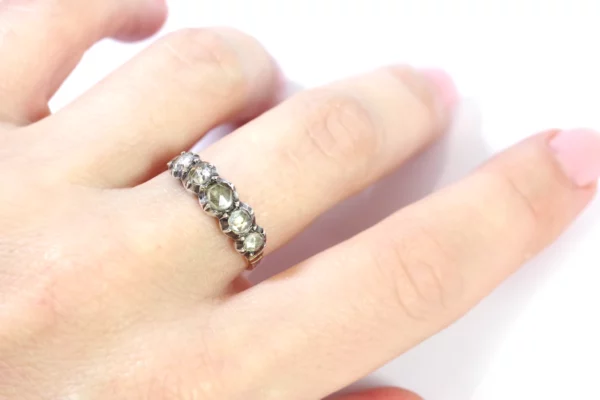
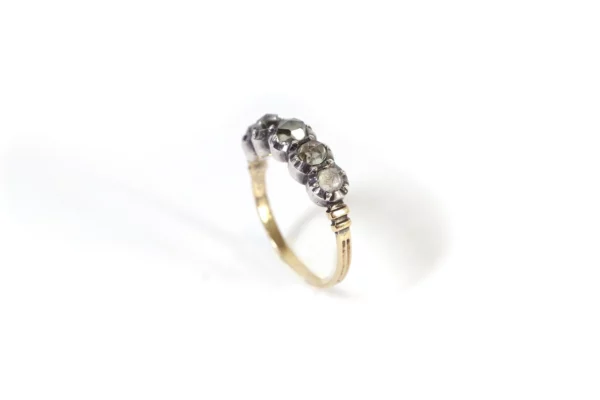 600,00€
600,00€Victorian paste ring in 18 karat yellow gold and silver. Antique ring set with a line of five faceted white paste stones iimitating diamond. Antique engagement ring, circa 1850, France.
Eagle head hallmark (french state hallmark for 18 karat gold) and partially erased goldsmith’s hallmark.
Finger size: 50.5 EU or 5.5 US (resize possible)
Width: 5.5 mm
Condition: scratches from use
Weight : 2.58 gr
-
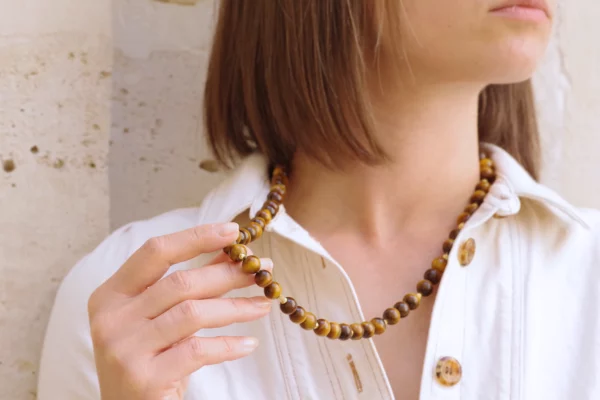
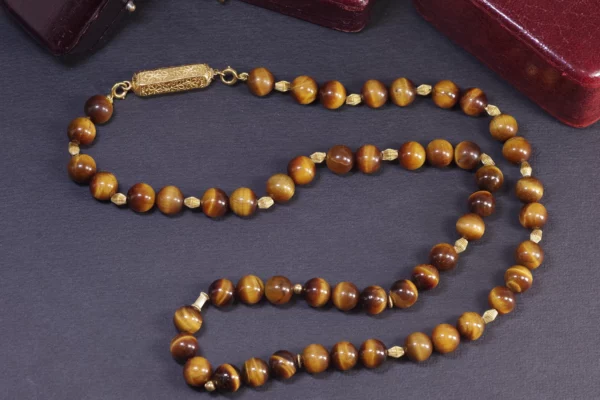 600,00€
600,00€Long necklace of tiger-eye pearls and 18 karat yellow gold (750). Necklace made of 53 tiger-eye quartz balls and 21 gold beads of different shapes. The necklace ends with a large barrel clasp in gilded metal, chased with floral motifs on all facets. It is held in place by two gold spring rings. The tiger’s eye features a gold shimmer that changes with the orientation of the ball. Necklace dating from the ’60s.
Eagle head hallmark on both round clasps.
Length: 69.5 cm
Clasp size: 32 mmPearl diameter: 10 mm
Weight : 94.21 gr
*The antique box is not sold with the jewel*
-
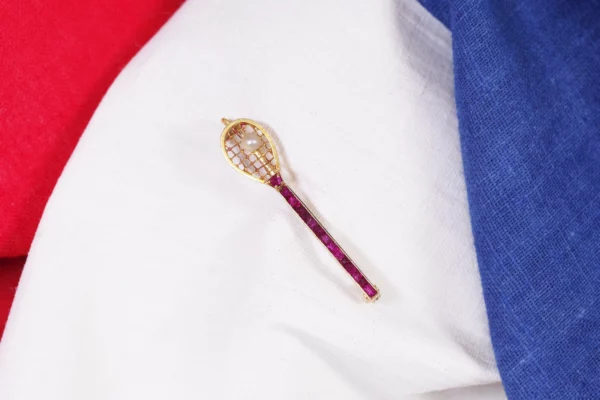
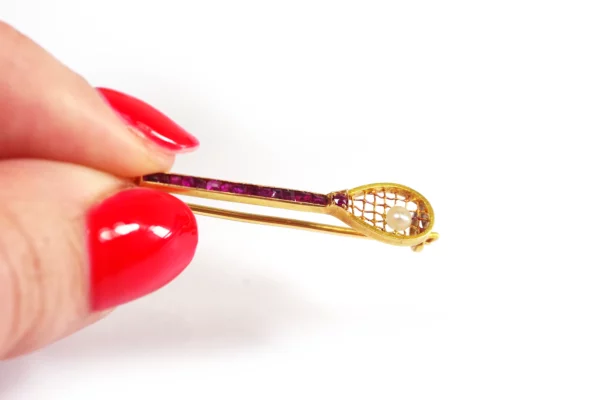 450,00€
450,00€Art Deco tennis racket brooch in 18 karat yellow gold (750). Brooch in the shape of a tennis racket, with the handle set with 15 calibrated rubies and the strings decorated with a pearl representing the ball. Sports brooch from the Art Deco period, circa 1920. Sport jewelry collection.
Hallmarks: weevils (french state hallmark for 18 karat gold)
Length: 31 mm
Width: 7 mmCondition: light scratches from use
Weight: 1.50 gr
More information : Tennis has been an Olympic sport since the first edition of the modern Olympic Games in Athens in 1896. After being removed from the Olympic program for more than fifty years, it returned at the 1988 Seoul Olympics.
-
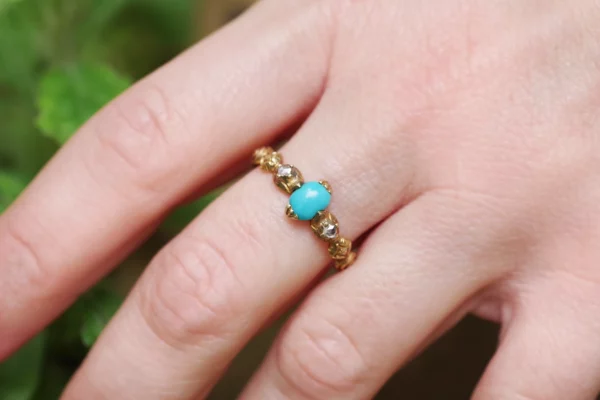
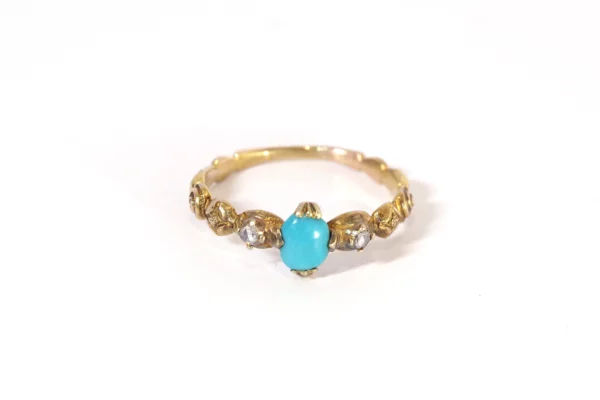 750,00€
750,00€French Georgian ring in 18 karat yellow and rose gold. The ring is adorned with a turquoise blue glass cabochon, flanked by two rose-cut diamonds. The band features rich decoration, including a pine cone, a swirl motif, and a cross pattern. French antique ring, Georgian period, circa 1820/1830.
Hallmarked with a ram’s head (active between 1819-1838, french state hallmark for 18 karat gold)
Ring size: 55 EU or 7.25 US (resizing possible)
Ring head width: 7.33 mm
Condition: fine wear scratches
Weight: 2.56 gr
*The antique box is not sold with the jewel*
-
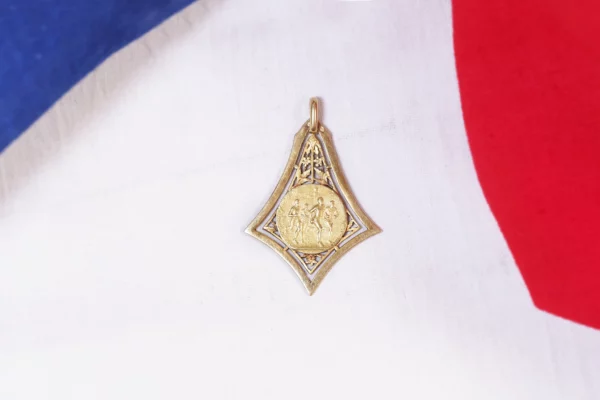
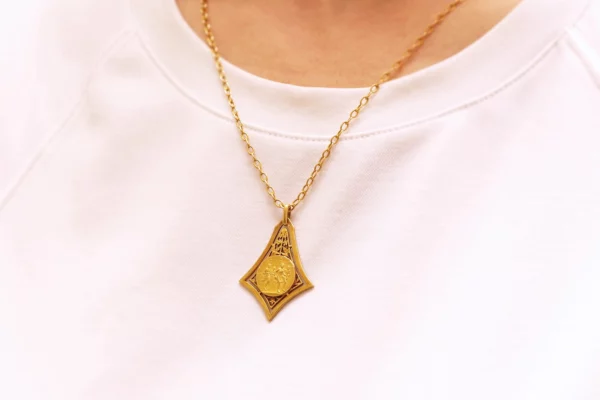 700,00€
700,00€Art Nouveau Athletics medal in 18 karat yellow gold. Art Nouveau pendant centered on a small medal depicting four runners in a 4×1200 meters relay race. The pendant is openwork and decorated with flowers and foliage, typical of the Art Nouveau period. The reverse of the medal bears the inscription “L’intransigeant 17 Dec 1922 Relais 4×1200”. Sports medal pendant, 1922, France. Sport jewelry collection.
Hallmark: eagle’s head and illegible maker’s mark, medallist’s signature H. DEMEY
Height (including bail): 4 cm
Width: 2.7 cmCondition: signs of wear
Weight: 6.12 gr
*The antique gold chain is not sold with the jewel*
See our antique chainsMore information : This piece was awarded to Armand Burtin for the cross-country race of L’Intransigeant held on December 17, 1922.
Armand Burtin (1896-1972) was a French athlete specializing in running (1500 meters, relay, 3000 meters). He left a significant mark on French athletics history with his remarkable performances. In 1920, Armand Burtin won the French Championship title in the 1500 meters, crossing the finish line in 4 minutes and 3.4 seconds. This victory etched his name in French athletics history and demonstrated his exceptional talent in this discipline. Armand Burtin represented France in the Summer Olympics of 1920 and 1924, proudly bearing his country’s colors on the international stage. His sporting career and achievements left a lasting legacy in French athletics, making him a respected and admired athlete both for his track performances and his dedication to the sport.
-
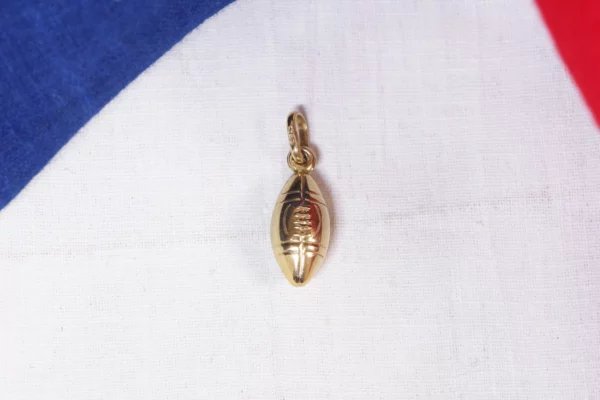
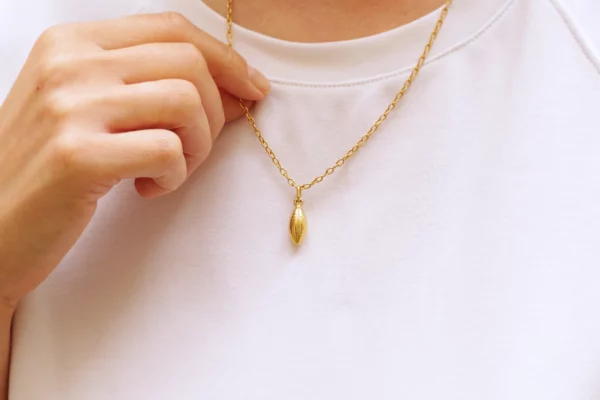 140,00€
140,00€Rugby ball pendant in 18 karat yellow gold. A sports-themed pendant in the shape of an American rugby ball. Vintage pendant, circa 2000. Sport jewelry collection.
Marked 750
Height (including setting): 22 mm
Width: 7 mm
Condition: scratches from use
Weight : 1.20 gr
More information : First codified in England in 1846, it spread worldwide in the 1850s. Mixing with local practices, the second half of the 19th century saw the emergence of Gaelic soccer in Ireland, Australian soccer, Canadian soccer and American soccer.
*The antique gold chain is not sold with the jewel*
See our antique chains -
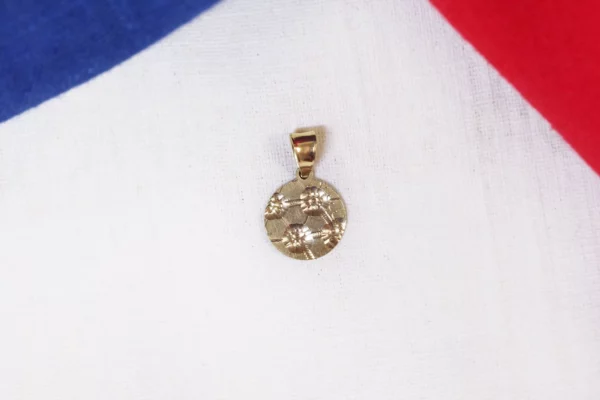
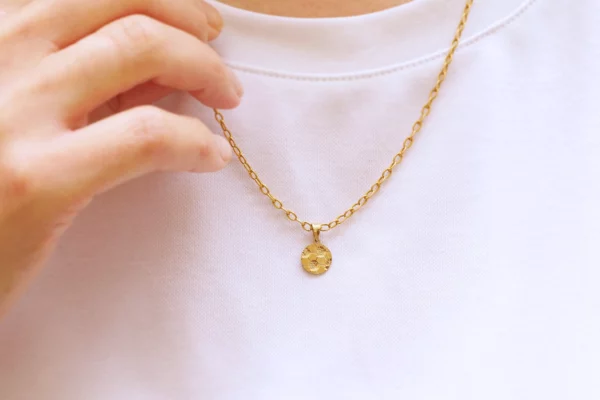 60,00€
60,00€Flat soccer pendant in 9 karat gold (385). A pendant with a sporting theme in the shape of a football, chiselled to form the various pieces of leather. Vintage pendant, circa 2000. Sport jewelry collection.
Height (including bezel): 14 mm
Width: 9 mmCondition: scratches from use
Weight: 0.30 gr
More information : Soccer, or soccer, is a sport that emerged at the end of the 19th century, and its International Federation, FIFA, was created in 1904.
*The antique gold chain is not sold with the jewel*
See our antique chains -
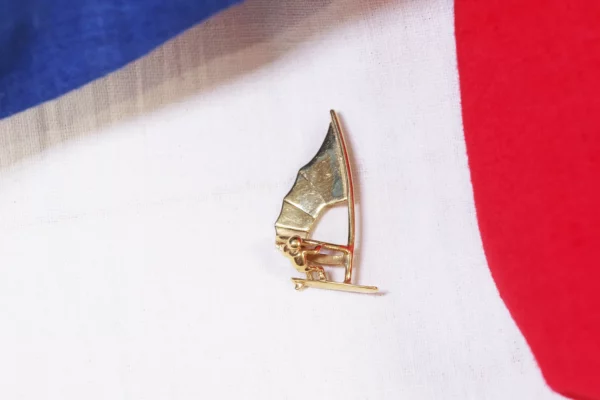
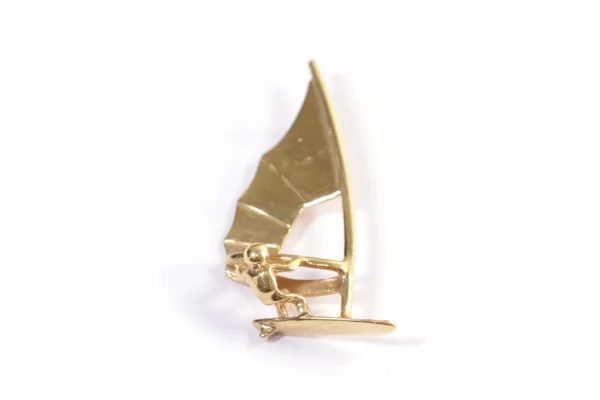 300,00€
300,00€Windsurfer gold pendant. Pendant featuring a windsurfer in 18 karat gold. This vintage pendant depicts a sportsman on a windsurfing board. Vintage pendant, circa 2000, France. Sport jewelry collection.
Eagle’s head hallmark (french state hallmark for 18 karat gold)
Height: 25 mm
Width: 16 mmCondition: fine signs of wear
Weight: 1.82 gr
More information : Windsurfing emerged in the late 1960s, and France became the country where windsurfing developed the most, initially thanks to its pioneering and historical promoters (Patrick Carn, Charles Daher, Pierre-Yves Gires, Yves Loisance). Windsurfing became an Olympic sport in 1984, in Los Angeles.
*The antique gold chain is not sold with the jewel*
See our antique chains -
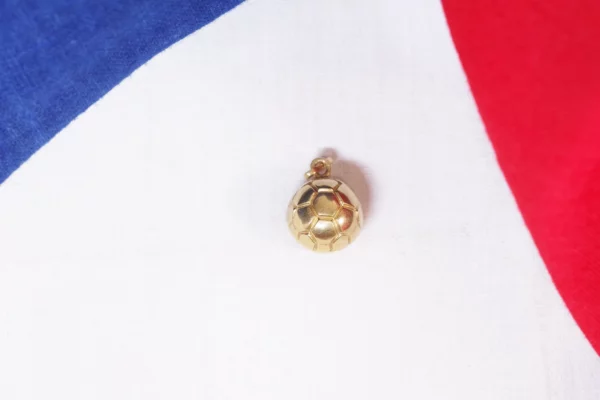
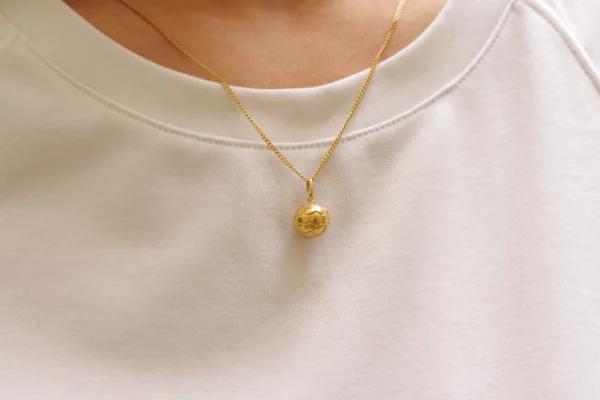 150,00€
150,00€Soccer ball pendant in 18 karat gold (750). This sports-themed pendant is shaped like a soccer ball. Vintage French pendant, circa 2000. Sport jewelry collection.
Hallmarked with an eagle’s head (french state hallmark for 18 karat gold) and maker’s mark.
Height (including bail): 15 mm
Width: 10 mmCondition: signs of wear
Weight: 0.82 gr
More information : Soccer, known as football in many countries, originated in the late 19th century, with its International Federation, FIFA, founded in 1904.
*The antique gold chain is not sold with the jewel*
See our antique chains -
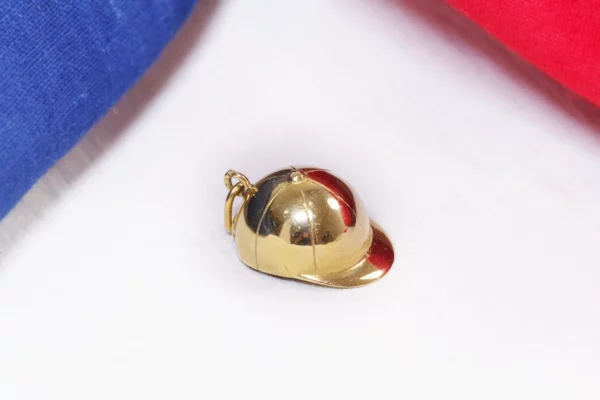
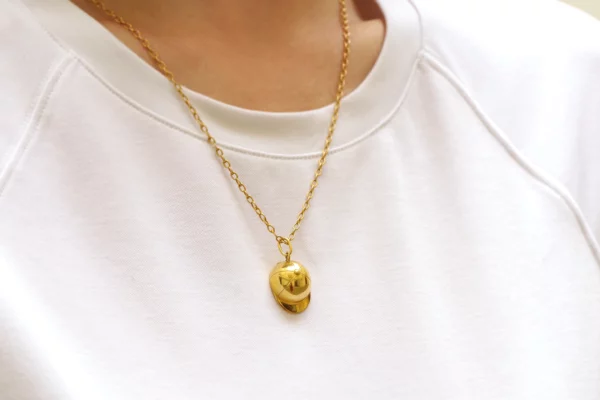 400,00€
400,00€Riding helmet pendant in 18 karat yellow gold (750). This pendant represents an equestrian helmet, also known as a “toque,” though it is increasingly referred to as a helmet. It is decorated with grooves. The helmet is the protection that riders wear on their heads for horseback riding. Vintage pendant, circa 1980, France. Sport jewelry collection
Hallmarked with an eagle’s head (french state hallmark for 18 karat gold)
Height (including bail): 28 mm
Width: 15 mmCondition: signs of wear
Weight: 3.82 gr
*The antique gold chain is not sold with the jewel*
See our antique chains -
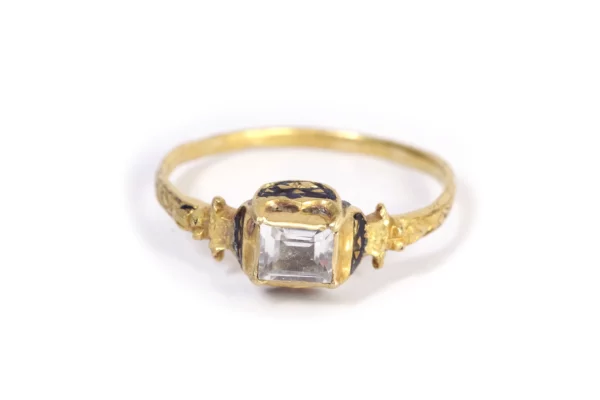
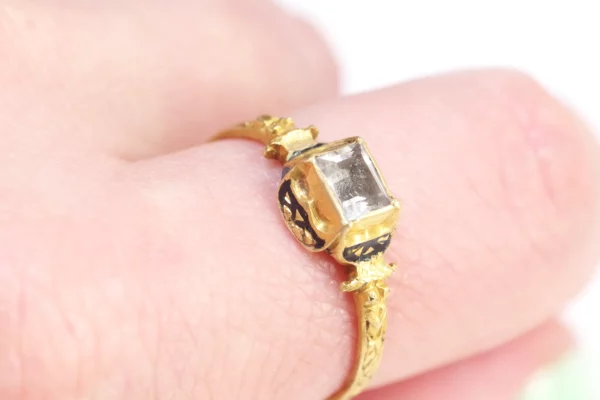 Out of Stock
1,00€
Out of Stock
1,00€Scarce rock crystal Renaissance ring in 22 Karat gold. This 16th-century ring is setted with a table-cut rock crystal in a closed setting. The bezel is decorated with black enamel with gold highlights and double crescent motifs, ending in four prongs. The shoulders feature fine chiseling. Renaissance ring from the 16th century, Western Europe. During the Renaissance, rings evolved from the simple forms of the medieval period to miniature works of art, combining the skills of the chiseler, engraver, enameler, and stone cutter. Cabochon settings persisted, but the evolution of stone cutting allowed for the increased use of table cuts.
Ring size: 57 EU or 8 US
Bezel dimensions: 7 x 8 mm
Estimated weight of the rock crystal: 0.49 ct
Note: For examples of similar 16th-century rings, see items 334 and 430 in Scarisbrick’s “Rings; Jewellery of Power, Love and Loyalty” (2007); item AF.1743 in the British Museum collection and items 279 and 281 in the “Victoria and Albert Museum Catalogue of Rings” by Oman (1930).
Condition: normal wear consistent with age, a missing part in the setting.
Weight: 2.91 gr
-
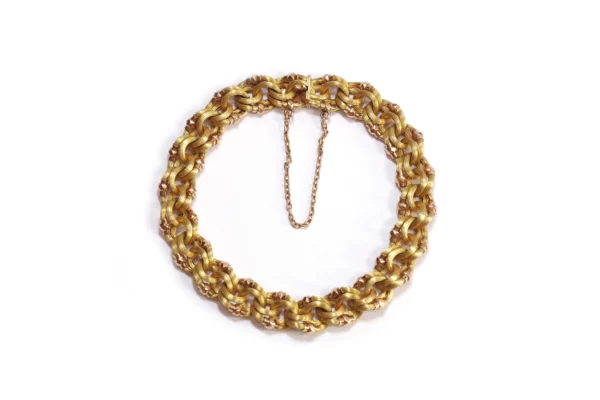
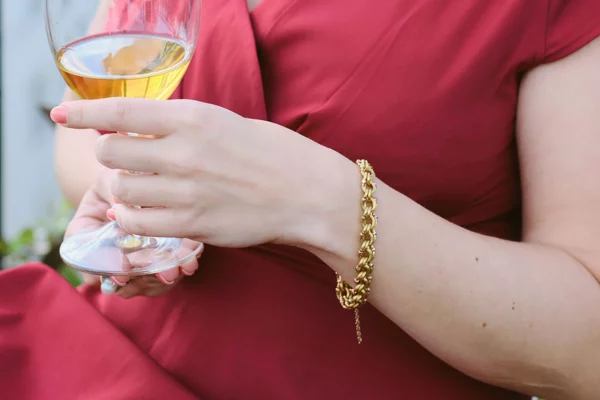 2000,00€
2000,00€Antique Antillean bracelet in 18k yellow gold. Antique bracelet composed of twisted links forming grooved rings decorated with faceted spherical motifs. Antique bracelet from the Antilles, circa 1880, France.
Hallmarks: eagle’s head, rhinoceros head, and maker’s mark.
Length: 19.5 cm
Width: 10 mmNote: the clasp is secured by an 18 karat gold safety chain.
Condition: minor wear and tearWeight : 17.71 gr
*The antique box is not sold with the jewel*
Further information : Traditional jewelry is still worn in the Antilles for special occasions and cultural events. This regional Antilles jewelry is characterized by elaborate motifs such as twisted gold wires, vine leaves, forçat mesh, fluting, “gros sirop” mesh, gold wire spirals, etc.
